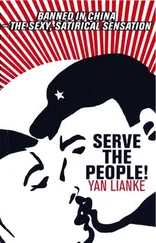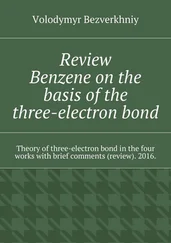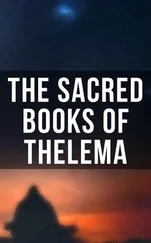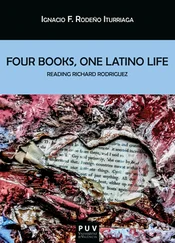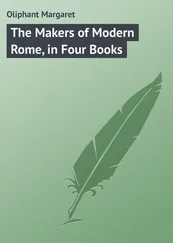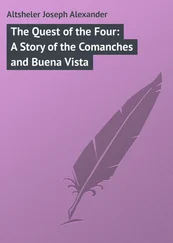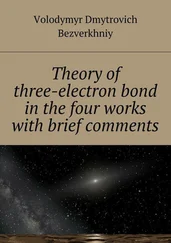Everyone paused and placed their books on Buddhism at the base of the cross, in front of the Scholar. When they passed under the Child, they all looked up and saw that the purple clouds and white angel-shaped clouds, together with the magpies, were nowhere to be found. The sun shining down from the sky was dimmer than before, and the blood on the Child’s hands and feet, and on the cross had begun to congeal and turn black. Oil began to appear on the Child’s forehead and face, and cracks began to appear in his parched lips.
The Scholar shouted to the Author, “We can’t leave anyone behind!”
The Author nodded to the Scholar, and said, “Take the Child down.”
The Scholar considered for a moment, then said, “You should all leave. I’ll do as the Child had asked, and not lower him until it is time to lower Jesus himself.”
So they left the Child under the bright sun, suspended over that sea of flower blossoms. One after another, everyone passed beneath him, silently leaving the compound.
They left him hanging there under the hot sun.
Only the Scholar remained behind.
Everyone else followed the wide, wide road leading to the outside world. They walked and walked. Eventually they passed a patriotic inspection station, then another. At dusk they reached an intersection, and left the main road to follow along the shore of the river. Suddenly they saw thousands upon thousands of refugees, all toting carrying poles and hauling carts as they headed inland. The refugees kicked up a cloud of dust and produced a cacophony of footsteps. Each family carried their bedding and pots and pans on their poles and in their carts, together with their paper and iron pentagonal stars. The family in front included a thin and crippled man who appeared to be in his thirties or forties and was struggling to haul his cart. His wife, parents, and their belongings were all piled inside. This family was leading everyone back toward the Re-Ed district next to the river. On the cart, there was a white sign with a faded pentagonal star. Everyone riding on the cart — including children, women, and the elderly — had a star pinned to their chest. As this family proceeded inward, exhausted and covered in dust from their long journey, the Author and the others continued outward, their backs to the setting sun. The two groups passed each other at the intersection, but after the family disappeared from sight, the Author suddenly stopped and asked, “Hey, wasn’t that the Technician, who earned five stars and left last year after discovering you could use black sand to smelt steel!”
Everyone else stopped as well, and realized with surprise that it was in fact the Technician. They cupped their hands to their mouths and shouted his name, asking why he was heading inland. He merely continued hauling his cart filled with luggage and family members, heading into the sunset, like stalks of withered grass blowing in the autumn wind. The crowd of refugees said, “We heard that over here there is a lot of land and few people, and after the spring harvest there is more food than you can eat.”
The crowd following the Technician headed inland, while the Author led his own group in the other direction.
1. A New Myth of Sisyphus , pp. 13–21
(Of the four texts that make up this manuscript, Criminal Records was initially published in the 1980s as a collection of historical documents, while the Author’s nearly five-hundred-page historical account, Old Course , was not published until around 2002, by which time circumstances had changed to the point that it was greeted with almost complete silence. A copy of Heaven’s Child , meanwhile, was purchased several years ago in a secondhand book stall. It had been published by China’s Ancient Books and Records Press, and where the Author’s name normally appeared there was instead only the word Anonymous . The only one of these four texts that was never published was the philosophical manuscript titled A New Myth of Sisyphus , which the Scholar worked on for many years but never finished. This text contains three chapters and eleven sections, and it is said that it is on account of the Scholar’s eccentric and abstruse views on the survival of human society that the manuscript was never published. I happened upon the manuscript in the National Center for the Study of Philosophical Literature, and readers may be able to gain some murky understanding of it from the introduction, which is several thousand words long.)
The punishment that God imparted on Sisyphus was like heaven’s decree that the year be divided into four seasons. Time moved forward day by day. But there was also a theory that time actually wasn’t moving forward, but rather backward, and that the arrival of tomorrow and the next day amounted merely to the progressive unfolding along a preordained schedule, like the act of opening a comic book to the last page and then methodically proceeding back to the beginning. In this way, our future selves stand as foretold recollections while our past selves exist only as vague anticipations. In this state of inverted time, Sisyphus’s punishment became an ordinary condition, to the point that he no longer regarded it as God’s punishment for his transgressions. We are therefore faced with Sisyphus’s fate of having to push that boulder up the mountain day after day, only to have it roll down the other side each evening when he pauses to rest. The next morning, panting heavily and covered in sweat, he once again pushes the boulder back up the mountain. This sense of eternal recurrence weighs down on our souls like a massive mountain.
We regard Sisyphus as a kind of hero — one who can accept absurdity, hardship, and punishment — and we are profoundly moved by his tragedy. By embracing Sisyphus, humanity is given a key and spirit with which to fracture existing reality and create a new one. What no one realizes, however, is that this view reflects our misunderstanding of Sisyphus’s condition. Over time, Sisyphus gradually grew accustomed to what we view as punishment, which he initially also regarded with frustration and distress but eventually managed to accept. This process of familiarization became his weapon, and permitted him to resist the forward movement of time. In the morning he would begin pushing the boulder toward the top of the mountain, and in the evening he would watch as it rolled back down the other side. The next morning he would begin the process all over again. Sisyphus had already come to regard this eternal recurrence as a requirement and a responsibility, and if he were to escape the prison house created by this perpetual repetition, Sisyphus would have felt that his life had lost all meaning.
Regardless of whether time was proceeding forward or backward, and whether he was growing old or becoming younger, Sisyphus never underwent the slightest change and instead found himself in an eternal cycle of exhaustion and recovery. However, one day when the boulder rolled down the mountain, Sisyphus followed behind it as usual, but as he was preparing to recommence his labor the next morning, something novel occurred.
He encountered a child.
A child appeared on his mountain of eternal recurrence, standing by the side of the road and watching the boulder roll down and Sisyphus running behind it. This child was simple and innocent, and full of curiosity about the world. The first time Sisyphus saw the child, he merely glimpsed him out of the corner of his eye. The next day when he was pushing the boulder up the mountain, the child was no longer standing by the roadside, though when he followed the boulder back down in the evening the child was there again.
This time, Sisyphus stopped and nodded to the child, asking, “How are you?”
Читать дальше



